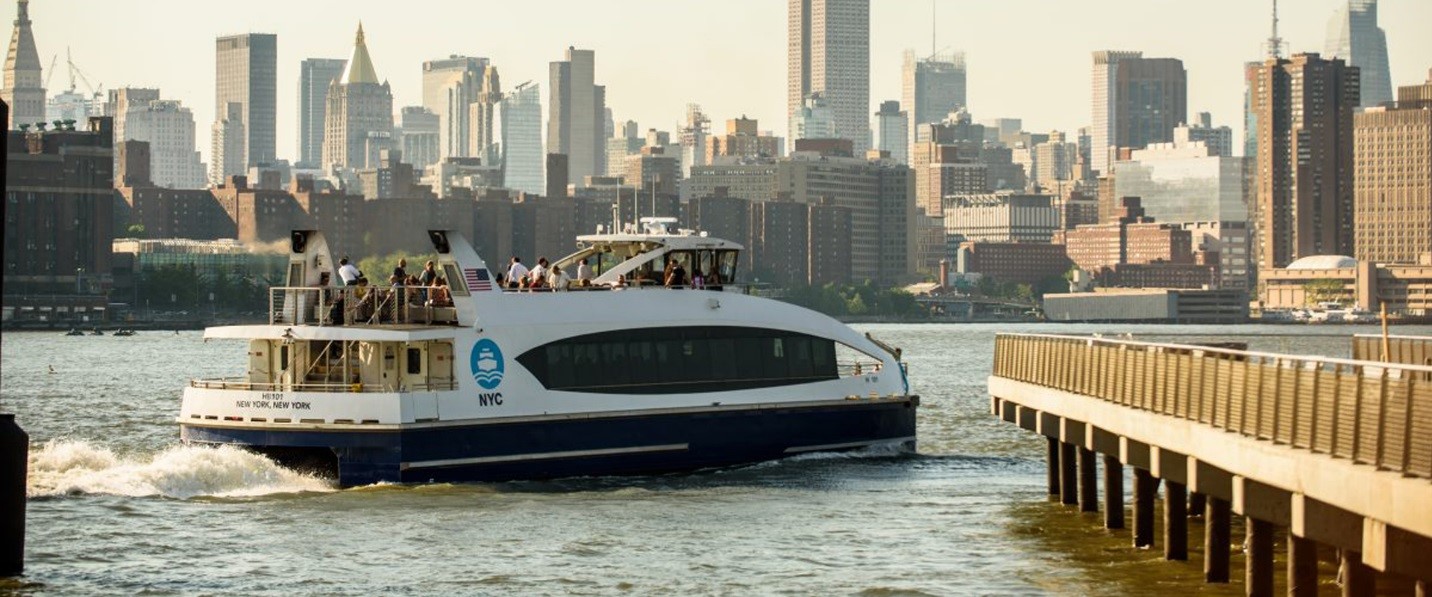Urban water transportation has been around for hundreds of years, from the gondolas in Venice to the water buses of Bangkok and Tokyo. Even here in the United States, many cities grew up with some form of water transit, be it Boston, St. Louis or San Francisco.
While not as popular nowadays thanks to bridges and tunnels over harbors and rivers, water taxis may be having a resurgence – especially in the face of climate change.
In North American nomenclature, the term “water taxi” is a misnomer because most so-called water taxis run on fixed routes and typically don’t involve people hailing a boat, like they do a car taxi.
It’s murky distinguishing a water taxi from just a passenger ferry, but it mostly comes down to size – water taxis are smaller than ferries. Yet public systems like NYC Ferries and Seattle’s King County Water Taxi run roughly the same size boats, proving the interchangeability of the terms water taxi, passenger ferry, and water bus.
Regardless of what they’re called, both of these systems have been profoundly successful, even considering initial costs. Incorporating NYC Ferries into the public-transportation network exceeded expectations and garnered more than a million riders in 86 days. King County Water Taxi shuttles more than half a million riders annually between its Vashon and West Seattle routes.
 Photo of an NYC Ferry from the New York Transit Museum.
Photo of an NYC Ferry from the New York Transit Museum.
Another strong societal-benefit indicator of the success of these systems is easy connections between water taxis and other modes of transit. The King County Water Taxi has seamless integration with Sound Transit and various bus operators because the OCRA Card, the Seattle region’s universal stored-value card, is accepted as a main form of payment. The NYC Ferry system does not take the MetroCard like the rest of the city’s transit, but uses mobile ticketing in addition to regular tickets.
More importantly, it maintains the same flat $2.75 fare as the Subway, providing a more pleasant and possibly faster connection between parts of Brooklyn, Queens, and Manhattan. In fact, the system has some of the highest satisfaction rates among its riders, with 93 percent of riders giving NYC Ferry a customer satisfaction rating of seven or higher on a 10-point scale.
The success is not just limited to New York and Seattle. In Baltimore, there has been a long history of water-taxi service. Ed Kane’s Water Taxis have been the historical backbone of water taxis in Baltimore, and the company recently rebranded under new ownership by Kevin Plank, notable for being the founder of Under Armour. The free Harbor Connector carries commuters and tourists between points in the Inner Harbor. But because Baltimore Water Taxis are privately owned, some have argued that the city is using funds inappropriately to prop up a private company at the expense of the poor in one of the most inequitable cities in the nation.
Just 45 miles to the south, Baltimore’s southern neighbor is expanding its water transit. While there has historically been water taxis from Georgetown, Alexandria and (more recently) National Harbor, Washington, D.C., is beginning to realize its water potential with the Potomac Riverboat Co.’s major expansion of water taxis to new developments like the District Wharf and the Capital Riverfront. It remains to be seen if it takes off the way it did in Baltimore, as they’re geared towards an exclusively tourist crowd.
It makes sense for cities along navigable bodies of water to invest in some elements of water transportation, especially since a body of water is a likely reason a city exists in the first place. In the face of climate change, cities at risk of flooding extensively like Miami or New Orleans will have to adapt their transit systems, and water taxis may be a critical way to adapt to a new urban landscape. During other climate-change influenced disasters like the Thomas Fire in January, water transportation provided critical connections from an isolated Santa Barbara to the rest of California.
Other areas with little history of having water taxis may want to build up systems as a way to redevelop waterfront space that had been long neglected or were the result of shoddy planning. This would be able to cater towards tourism, but if a system is comprehensive enough, it could also cater towards local users too.
Water transport, ancient and overlooked, can be an integral part of a transit future for cities that have focused too rigidly on motor vehicles or rail but have always had water right through their home turf.
Photo of a water taxi in Washington, D.C., by Owain James for Mobility Lab.